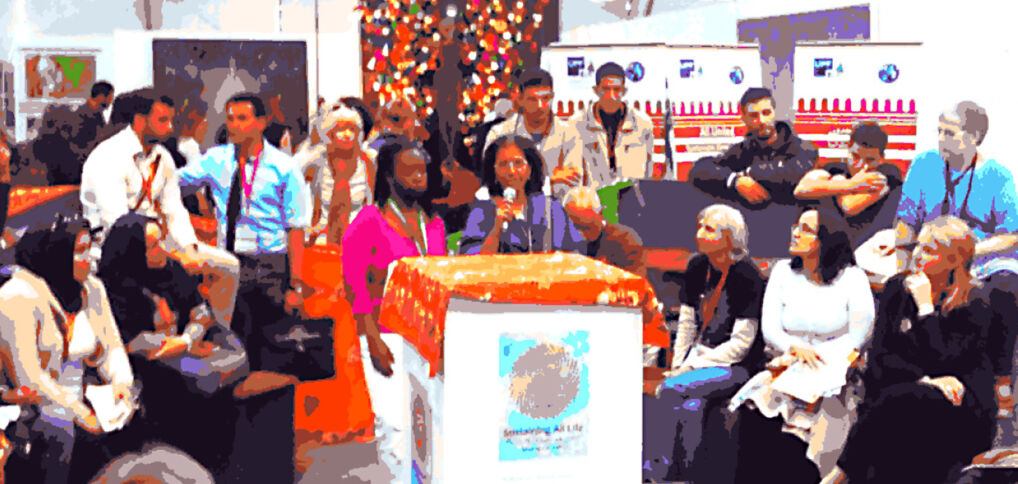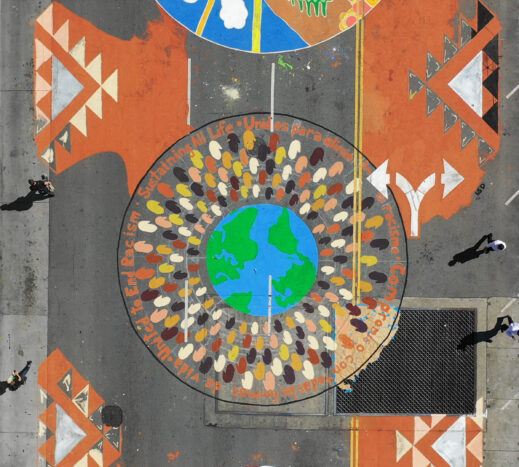
View this resource
as a PDF >>
****
View this resource
in Arabic >>
****
View this resource
in French>>
****
View this resource
in Spanish >>
Climate change has played a role in many recent armed conflicts and is projected to be an even more serious driving force of future conflicts. The world’s militaries are a major source of carbon emissions with their enormous consumption of fossil fuels and their sprawling industrial operations.
Working for peace and demilitarization is a climate issue. The world is perilously close to exceeding the remaining carbon budget to stay below 1.5° C. As long as major military powers continue to engage in war, global carbon emissions will rise and revenues needed to address the climate emergency will be used for war. It is essential that we stop war to end the climate emergency. Joining the climate justice movement with the anti-war movement will be a key step.
War fuels climate change and amplifies its effects
Of all the institutional sources of climate change, none are bigger than the militaries of the world. For example, the US military is the single biggest institutional source of carbon emissions in the world—with its massive reliance on fossil fuels to power its aircraft, ships, and land vehicles, and to power its thousands of facilities. The US military emits more carbon than most nations on earth, including Portugal and Denmark.
The global military industrial complex consumes many billions of dollars yearly that could be used for potential solutions to the climate crisis. Global military spending in 2022 was 2.24 trillion U.S. dollars, with the US and China together accounting for half of that amount. By allocating even half of this to addressing climate change, we would resolve the crisis quickly.
In times of war, the government redirects funding for climate remediation to the military budget. In the US and Europe, the Ukraine war has shown us that increased defense expenditure comes at the expense of environmental and social changes. When the military and war win, climate action loses.
The enormous amount of carbon emitted by the military amplifies the effects of climate change. Military conflict intensifies deforestation, desertification, air pollution, water contamination, and the poisoning of the soil. War prevents many communities from adapting to and recovering from climate change. Oil and gas infrastructure is often a target of military action—instantly burning huge quantities of fossil fuels. War destroys infrastructure—and replacing infrastructure will eventually require very carbon-intensive industrial production and construction.
War creates internally displaced populations and refugees, as does climate change. These populations are then highly vulnerable to the effects of climate change. As large numbers of climate refugees move to new locations, they often come into conflict with other vulnerable populations as natural resources become scarce—thus the cycle of climate change and violence and war is perpetuated.
Climate change creates conditions for violence and war

It is expected that by 2050, 200 million climate migrants will have been forced to move because extreme or changing weather has made their lives no longer viable where they live. In this year alone extreme weather events (droughts, fires, floods, and more) will likely displace 50 million people worldwide. We have already seen that 30 million people have been displaced in Pakistan.
The forced migration of people—both within nations and across international borders—creates economic, political, and social pressures as essential resources become scarce and inequities are magnified. Sometimes, forced migration adds to already-existing tensions within countries. These dynamics have played a major role in a number of recent armed conflicts.
The trend is expected to intensify as the longer-term impacts of climate change—food insecurity, lack of drinking water, heat stress, dramatic damage to coastal communities—become felt in more areas around the world. Regions projected to be most severely impacted by climate change are often among the world’s poorest and/or most densely populated. These populations will have the least access to the resources they need for survival and for preventing armed conflict.
Healing from the hurts of war and climate change
Climate change and war deeply affect everyone. They make us feel powerless, discouraged, and hopeless. Survivors of war are left terrified. All of us become entangled in the vicious cycle of destruction and trauma. The emotional hurts of war are so big that we often become numb. Our numbness and confusion can make it hard to think well. It can be hard to see the connection between war and climate change and to build the unity we need to end them.
We can heal from the traumas of war and climate change. We need to tell our stories connected to war and climate change. We need to become fierce allies to people who have been directly impacted by them. We need to reclaim our connection with all people and with the environment. As we fight to end all oppressions, stop war, and end the climate emergency, an important step will be redirecting the massive resources spent on war to climate solutions.


